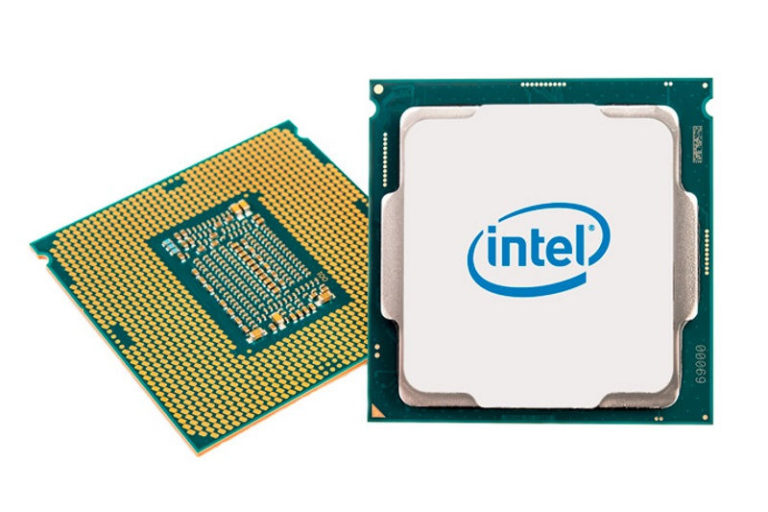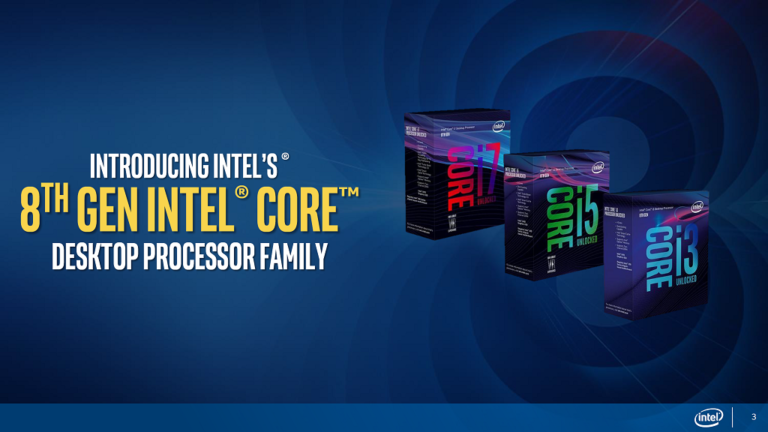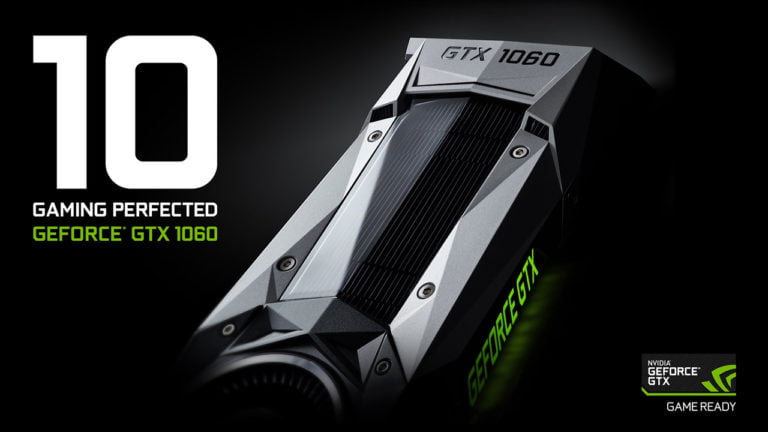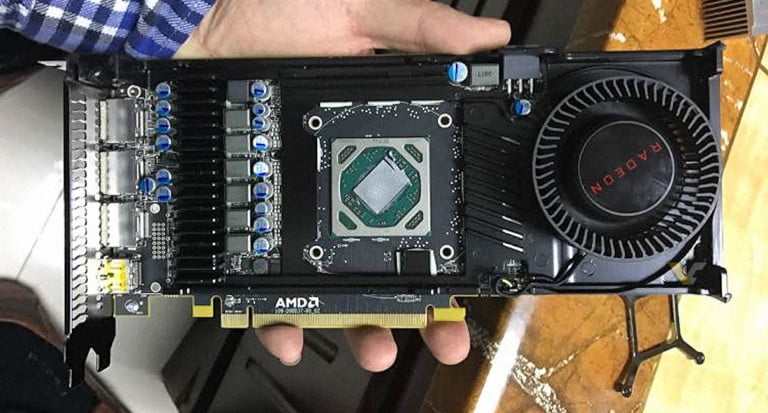AMD RX Vega 56 & Vega 64 Crossfire benchmark: Worth The Money?
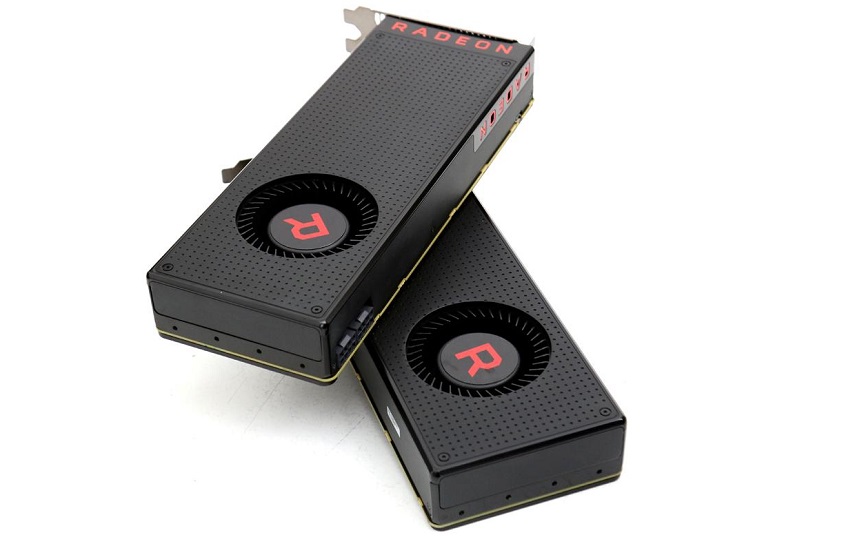
AMD’s RX Vega 64 and 56 graphics cards didn’t exactly impress consumers at launch, but the performance has improved since then, and it will get better as new games are released. That’s about a single GPU; what if you run the two cards in a Crossfire configuration? Yes, I’m talking about the Radeon RX Vega 56 and Vega 64 Crossfire. What will the performance be like compared to a single Vega 64. Let’s find out.
Before we dive into benchmarks, it’s worth mentioning that AMD has moved away from using the Crossfire tag for multi-GPU gaming. In a DirectX 12 world, they “reference multi-GPU as applications must support mGPU, whereas AMD has to create the profiles for DX11.” That said, this is merely a branding change, not a technical one.
RX Vega 56 + Vega 64 Crossfire benchmark vs. Single GPU
To no surprise, the RX Vega 64 downclocked itself without any trouble to match the Vega 56. The Crossfire worked like a dream, though it took a fair bit of tweaking, such as with Ashes of the Singularity and Deus Ex DX11, to ensure it was working correctly. Nevertheless, the results are interesting.
AMD RX Vega 56 + Vega 64 Crossfire – 1440p Avg FPS
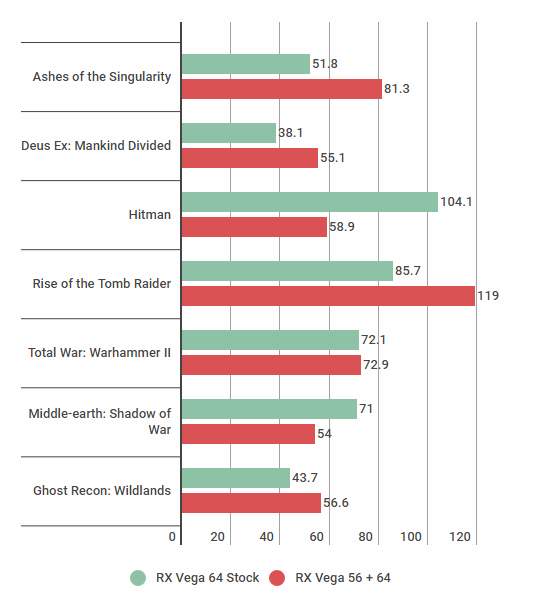
3DMark Time Spy
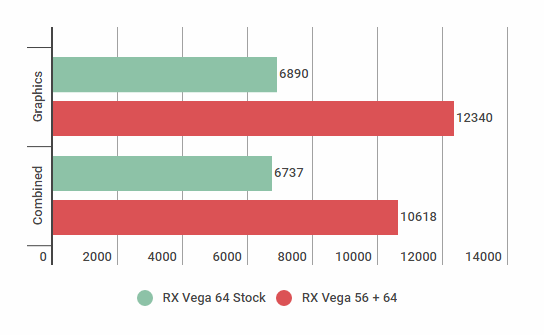
There was a noticeable increase in frame rate across the board, as well as a pretty exceptional 3DMark Time Spy score. However, titles like Hitman and Middle-earth: Shadow of War were an exception. Both of the games not only under-performed on Vega 64 Crossfire, but they performed worse than either of the cards working alone.
So overall, we recorded mixed results to say at least, and that’s why we don’t recommend a Crossfire or SLI – they are not for the average gamer.
That doesn’t mean to say there is no value in multi-GPU setups; in certain applications and games that support them, Crossfire and SLI can easily dominate in terms of performance. However, that’s a pretty short list of games right now and I can’t see all that many developers feeling an urgent need to expand it. But that’s not even the main problem here.
No matter how good your multi-GPU config is, it’s almost always more practical and economical to just upgrade to a single GPU setup. To give you an idea, two RX Vega 56 cards right now will cost you around $230 more than a GTX 980 Ti, and the performance is still unstable along with higher power consumption.
Unless you plan to mine with those cards when you’re not gaming, it’s probably not a very good investment. The same holds true for Nvidia GeForce cards. Two GTX 1070 Ti or GTX 1080 cards working together in SLI might net you around the same performance as a GTX 1080 Ti, but they will cost you a fair bit more aside from all the bugs.
In a nutshell, be it Crossfire or SLI, dual-card solutions in general are always worse for money. If a faster card solution exists on the market, you should definitely pick it up.

